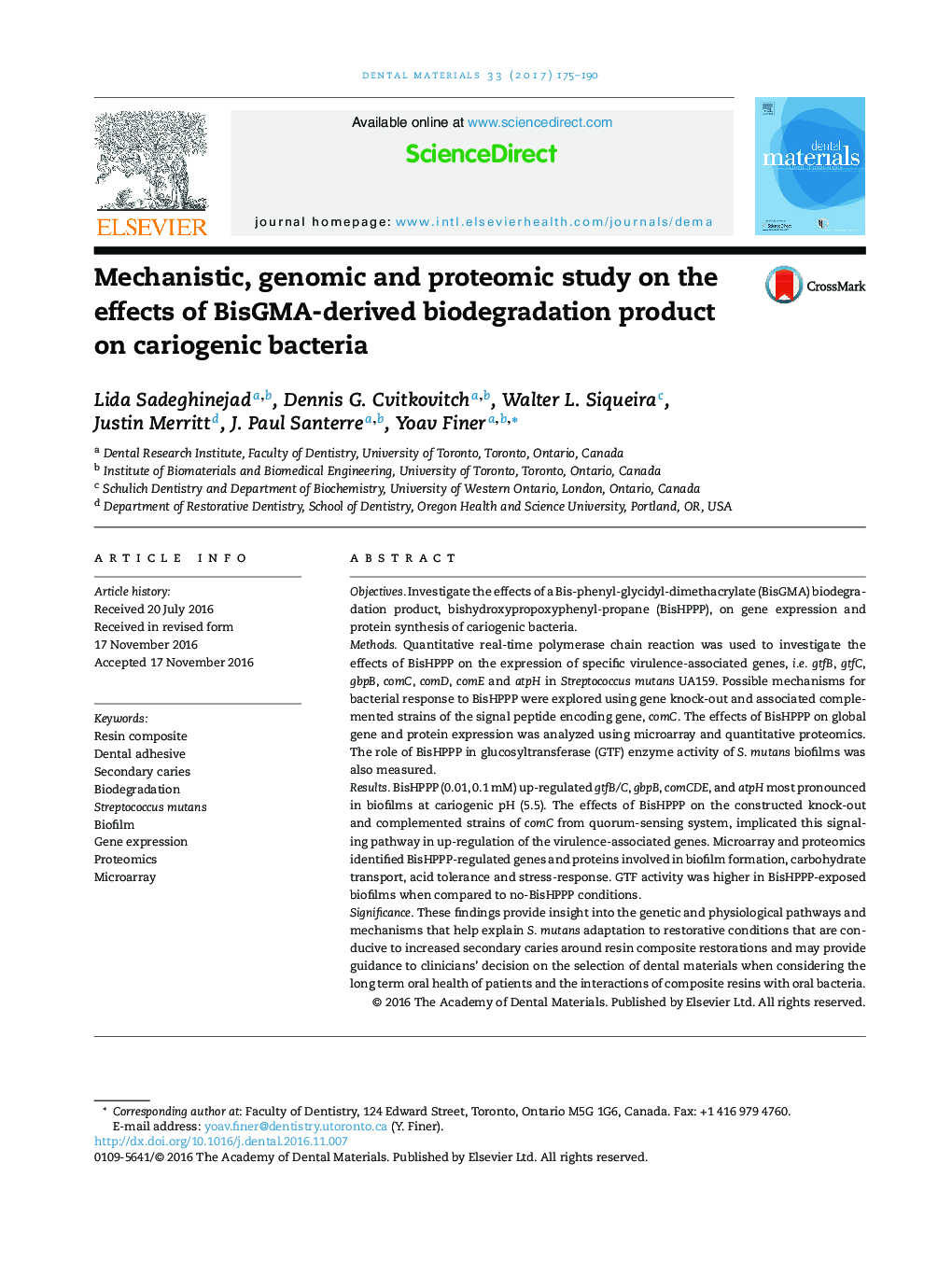| Article ID | Journal | Published Year | Pages | File Type |
|---|---|---|---|---|
| 5433008 | Dental Materials | 2017 | 16 Pages |
â¢A BisGMA-derived degradation product affects gene expression of cariogenic bacteria.â¢Resin composite degradation product affects gene expression of cariogenic bacteria.â¢A BisGMA-derived biodegradation product affects virulence of S. mutans.â¢Resin composite biodegradation product affects virulence of S. mutans.â¢A BisGMA-derived biodegradation product regulates biofilms-related proteins/enzymes.
ObjectivesInvestigate the effects of a Bis-phenyl-glycidyl-dimethacrylate (BisGMA) biodegradation product, bishydroxypropoxyphenyl-propane (BisHPPP), on gene expression and protein synthesis of cariogenic bacteria.MethodsQuantitative real-time polymerase chain reaction was used to investigate the effects of BisHPPP on the expression of specific virulence-associated genes, i.e. gtfB, gtfC, gbpB, comC, comD, comE and atpH in Streptococcus mutans UA159. Possible mechanisms for bacterial response to BisHPPP were explored using gene knock-out and associated complemented strains of the signal peptide encoding gene, comC. The effects of BisHPPP on global gene and protein expression was analyzed using microarray and quantitative proteomics. The role of BisHPPP in glucosyltransferase (GTF) enzyme activity of S. mutans biofilms was also measured.ResultsBisHPPP (0.01, 0.1Â mM) up-regulated gtfB/C, gbpB, comCDE, and atpH most pronounced in biofilms at cariogenic pH (5.5). The effects of BisHPPP on the constructed knock-out and complemented strains of comC from quorum-sensing system, implicated this signaling pathway in up-regulation of the virulence-associated genes. Microarray and proteomics identified BisHPPP-regulated genes and proteins involved in biofilm formation, carbohydrate transport, acid tolerance and stress-response. GTF activity was higher in BisHPPP-exposed biofilms when compared to no-BisHPPP conditions.SignificanceThese findings provide insight into the genetic and physiological pathways and mechanisms that help explain S. mutans adaptation to restorative conditions that are conducive to increased secondary caries around resin composite restorations and may provide guidance to clinicians' decision on the selection of dental materials when considering the long term oral health of patients and the interactions of composite resins with oral bacteria.
